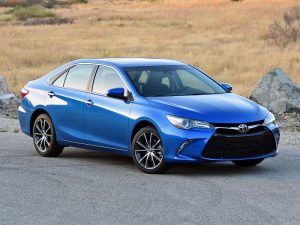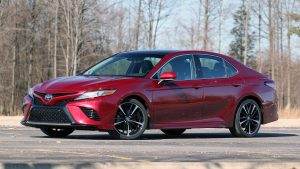 Automatic emergency braking systems are not new to me, but I’m caught off guard every time the system engages while I’m driving. AEB is a common theme in television commercials today. You know the commercials where the driver is daydreaming or otherwise distracted, the vehicle automatically stops, and then the driver is relieved when they see how close they were to hitting the vehicle or pedestrian in front of them.
Automatic emergency braking systems are not new to me, but I’m caught off guard every time the system engages while I’m driving. AEB is a common theme in television commercials today. You know the commercials where the driver is daydreaming or otherwise distracted, the vehicle automatically stops, and then the driver is relieved when they see how close they were to hitting the vehicle or pedestrian in front of them.
In March 2016, the U.S. Department of Transportation’s National Highway Traffic Safety Administration (NHTSA) and the Insurance Institute for Highway Safety (IIHS) announced a historic commitment by 20 automakers representing more than 99 percent of the U.S. auto market to make AEB a standard feature on virtually all new cars no later than NHTSA’s 2022 reporting year.
NHTSA believes these technologies, already prevalent in luxury brands, represent the next wave of potential significant advances in vehicle safety. AEB is known by numerous names, including pre-collision braking system, collision mitigation braking system, distronic-plus with pre-safe brake, and autonomous braking system.
How it works is when the driver’s response is not sufficient to avoid a crash, the AEB system uses on-vehicle sensors such as radar, cameras or lasers to detect an imminent crash, then warns the drivers. If the driver does not take sufficient action quickly enough, the system automatically applies the brakes to assist in preventing or reducing the severity of a crash.
My most recent encounter with an AEB system was in my test drive of the spirited 2017 Camry Hybrid XLE. The five-seater features the 2.5-liter, four-cylinder engine and a high-torque electric motor, delivering a combined city/highway mpg of 38 and 200 horsepower. It escalates quickly. As a result, there was too much fun to be had in this Ruby Flare Pearl-colored sedan. But, the AEB kept me in check, ignoring my best intentions to stop in time, and thankfully taking over.

I also test drove the Blue Streak Metallic-colored 2017 Camry XSE 3.5-liter V6, which delivers a combined city/highway mpg of 24 and 268 horsepower. I had a good time with the steering-wheel mounted paddled shifters at my fingertips, but managed to stave off any AEB intervention.
Known for being the best-selling midsize sedan, the spacious and practical Camry is changing up its attitude with the all-new sporty 2018 model. But the 2017 models, which feature very few changes in comparison with the 2016 models, are hanging tough as they already make available innovative safety measures, such as AEB.

The prevalence of the AEB system is not a reason to stop paying attention to the road. More so, it’s a reason to focus even more. When it stops your vehicle, it’s not the most fun experience for your body. If you’re too caught up in anything outside of the road in front of you, you’ll miss the warning signals – sounds, visuals, vibrations or a mix of warnings.
IIHS research shows that AEB systems meeting the commitment would reduce rear-end crashes by 40 percent. IIHS estimates that by 2025 — the earliest NHTSA believes it could realistically implement a regulatory requirement for AEB — the commitment will prevent 28,000 crashes and 12,000 injuries.


